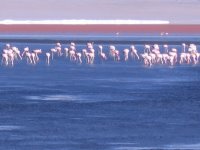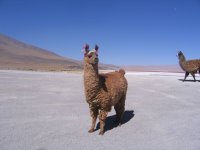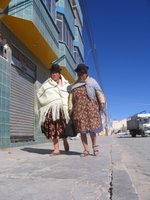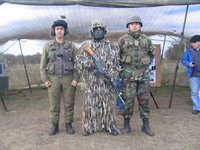BELIZE : 25 Oct to 4 Nov 2008

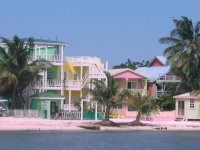
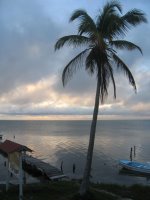
We spent 4 days in Miami, 3 of them door-knocking galleries which had all recently moved to an area where we were constantly warned to be careful and to be gone by 6pm. We walked around for the first 2 days, observing the odd groups of black and Hispanic home-boys and the occasional black car with tinted windows cruising the streets, then hired a scooter which made things easier but I was always happily surprised to find it still there when we got back to it. The last day we visited the art deco area along the beachfront, colourful and buzzing. The galleries were open and welcoming and most looked at our books on the spot, but as usual, haven't replied to follow-up emails. They're all biting their nails to see whether the up-coming Miami and Basel Art fairs will be the usual success or succomb to the chaotic economy.
We are now "recovering"in the tiny state of Belize City and on arrival in Belize city from Miami, we caught a boat straight to Caye Caulker, a small island to the north.

At Caye Caulker we swam a little, did a half day snorkel tour to the barrier reef and otherwise not much at all. The snorkeling was fun, as we saw lots of sting rays, which the guide threw around like beachballs, felt oily to touch, and were not threatening, as well as lots of colourful fish and delicate coral formations. They say that hammock-swinging is an art form here, but boredom follows quickly. There were a few rasta types hanging around, the odd whiff of marijuana and sometimes the sound of reggae in the distance, but otherwise nothing to do. It was here that the sand flies and bed bugs attacked.
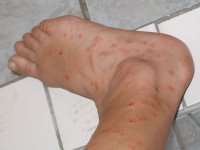
One week later we are scratching furiously at the hundreds of bites all over our bodies! After 4 days we travelled to Placencia in the south of Belize, where it was twice as expensive because of the hype surrounding the tourist development there, but again not much to do or see. We've been lucky to be out of the tourist season, with both Caye Caulker and Placencia very laid back and quiet.
All in all, Belize is disappointing, as the local mix of cultures (a British ex-colony with blacks, mestizos, Spanish, Indians, and even a population of Mnenomites/Amish like Dutch original settlers) etc) is being bought out and flooded by rich Americans who build resorts for the tourists who come to fish, dive and wind surf. There's not much evidence of any kind of culture at all (apart from the Garifunas who've developed 'punto rock', which is just a very fast version of reggae with lots of drumming) - especially as they get American TV here. We stayed in a hut owned by Stan, a very friendly, big black ex-footballer from LA who's been here a few years and says the locals are just plain lazy and expect things to be given to them - in other words they have only themselves to blame.
After 3 nights we spent a day on buses getting to San Ignacio in the west, at the border of Guatemala, which we hope will provide a little more interest, and at least will get us away from the sandflies, which have eaten us alive. Tomorrow we take a tour across the border into Guatamala to see the Mayan ruins at Tikal, apparently on a par with Machu Pichu but less expensive to get into and less touristy. We'll be buying the most poisonous mozzie spray we can find because there might not be sandflies over there but we 've been guarantied plenty of mosquitoes!
In two days time, we''ll be glad to get to LA where we can immerse ourselves in gallery hunting again. We will arrive at the historical eveningof 4th November 2008, when the result of the elections will be known. Everyone we've met here and in Miami are expecting Obama to win, and an awful lot also expect him to be assassinated. Not a pleasant scenario!
I leave you for now with a quote from the lonely Planet guide which is really a true analysis of the atmosphere of Caye Caulker, if not of the whole of Belize. Some of my best pics will hopefully follow soon!
"Belizeans have elevated "taking it easy" to an form (where else will you be told that checkout time is "Whatever times you like"?). Shopkeepers will close early if they feel they've made enough money for the day, and hammock swinging is pretty much a national past time..."

